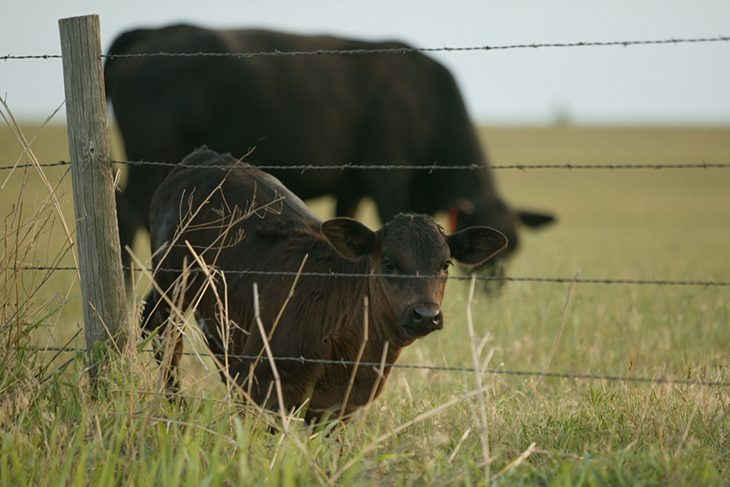
Set protocols now in preparation for assisting a cow or heifer in labor
Friday, August 17, 2018
Before the fall calving season commences, now is the time to put together and post a protocol for family members and hired employees to follow when they find a cow or heifer starting in the process of calving.
“An issue facing the rancher at calving time is the amount of time heifers or cows are allowed to be in labor before assistance is given,” said Glenn Selk, Oklahoma State University Cooperative Extension emeritus animal scientist and managing editor of the popular OSU Cow-Calf Corner newsletter.
Stage II is defined as that portion of the birthing process from the first appearance of the water bag until the baby calf is delivered. Formerly, traditional text books, fact sheets and magazine articles stated that Stage II of labor lasted from two to four hours.
“Research data from Oklahoma State and the USDA experiment station at Miles City, Montana clearly show that Stage II is much shorter, lasting approximately 60 minutes in first-calf heifers and 30 minutes or less in mature cows,” Selk said.
In these studies, heifers that were in Stage II of labor much more than one hour or cows that were in Stage II much more than 30 minutes definitely needed assistance.
“Research information also shows that calves from prolonged deliveries are weaker and more disease prone, even if born alive,” Selk said. “In addition, cows or heifers with prolonged deliveries return to heat later and are less likely to be bred for the next calf crop.”
If the heifer is not making significant progress one hour after the water bag or feet appear, Selk said a rancher should examine the heifer to see if assistance can be provided. Mature cows should be watched for only 30 minutes before a rectal examination is conducted.
“Make certain the cervix is completely dilated before pulling on the chains,” Selk said. “If the cattle breeder cannot safely deliver the calf at this time, his or her local large animal veterinarian should be contacted immediately.”
Most ranches develop heifers fully and use calving-ease bulls to prevent calving difficulties. However, a few difficult births are going to occur each calving season, reminds Selk.
“Giving assistance in a timely manner will save a few more calves, and result in healthier more productive 2-year old cows to rebreed next year,” he said.
The Oklahoma Cooperative Extension Service is one of two state agencies administered by OSU’s Division of Agricultural Sciences and Natural Resources, and is a key part of the university’s state and federally mandated teaching, research and Extension land-grant mission.
